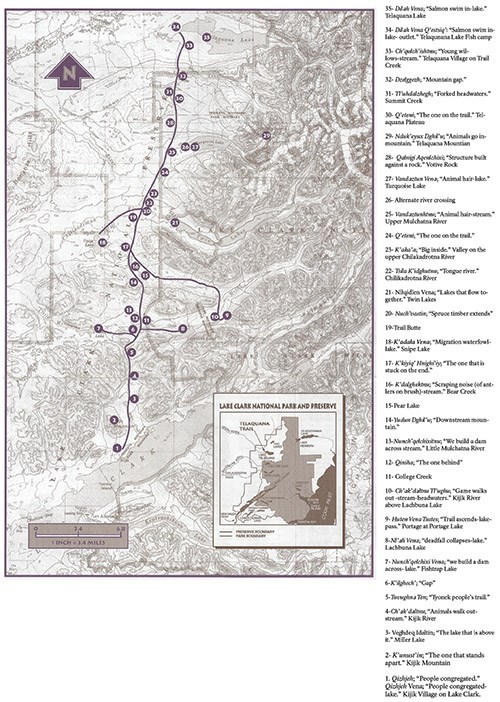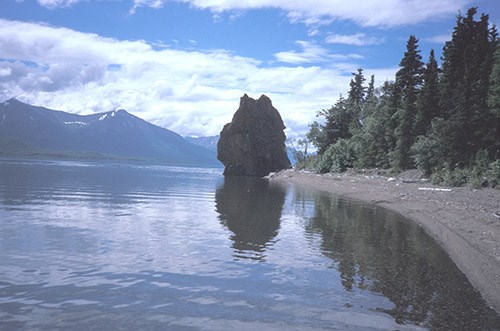Wayfinding is defined as signs, maps and other graphic or audible methods used to convey location and directions to travelers.
Article
Wayfinding at Telaquana Corridor

NPS Photo

It was believed that the Dena’ina moved into the Lake Clark area around 1600 AD, but recent carbon dating suggests they were in the area around 1000 AD. The Alaska Range and surrounding area (Htsaynenq’) is the heartland of the Dena’ina people. Their lifestyle was transient in nature, and they were known to be skilled hikers.
The Dena’ina would move with the seasons following the availability of resources. Though permanent villages were not established, family units would return to the same areas year after year for the resources. Oral stories and songs allowed the Dena’ina to find their way within the corridor and navigate between gathering places. The corridor provided access to salmon and large game, and served as a trade route to other Dena’ina further into the interior.

NPS Photo

NPS Photo
For More:
- Telaquana Trail - Lake Clark National Park and Preserve website
- Project Jukebox - This University of Alaska Fairbanks project has recorded elders describing parts of the Corridor
Last updated: October 30, 2024
